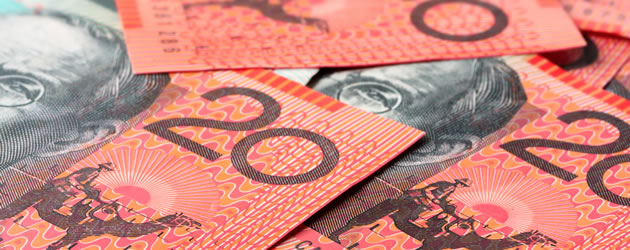The Euro to Australian Dollar (EUR/AUD) exchange rate strengthened by around 0.46% on Wednesday morning.
After European economic data produced positive results, the common currency appreciated versus the majority of its most traded currency competitors. The advance has been somewhat laboured, however, with the tensions surrounding Greece still weighing heavily on demand.
The Australian Dollar, meanwhile, softened versus most of its major peers despite positive data out of China. The ‘Aussie’ (AUD) declination can be attributed to a slump in iron ore prices and speculation that the Reserve Bank of Australia (RBA) will cut the lending rate in April.
The Euro to Australian Dollar (EUR/AUD) exchange rate is currently trending in the region of 1.4165.
Euro (EUR) Exchange Rate Strengthens Irrespective of Greek Woes
Although the situation between Greece and its creditors is far from resolved, the shared currency strengthened on Wednesday. This could be due, in part, to fears that the recent declination was overdone with a Grexit already priced-in.
Aiding the common currency uptrend was better-than-forecast domestic data. Italian Manufacturing PMI bettered estimates of a rise from 51.9 to 52.1 with the actual result reaching 53.3. French Manufacturing PMI advanced beyond expectations, moving up from 48.2 to 48.8. German Manufacturing PMI eclipsed the median market forecast of 52.4, with the actual result reaching 52.8. And the Eurozone Manufacturing PMI bettered the market consensus of 51.9, with the actual result hitting 52.2.
Markit economist Chris Williamson said of the Eurozone Manufacturing PMI; ‘Producers are benefitting from the weaker Euro, which has had the dual effect of boosting competitiveness in export markets as well as making competing imports more expensive in the home markets.’
The Euro to Australian Dollar (EUR/AUD) exchange rate has dropped to a low of 1.4057.
Australian Dollar (AUD) Exchange Rate Stumbles on Iron Ore Price Slump
In addition to damp market sentiment weighing on demand for the South Pacific asset, a considerable slump in iron ore prices has seen the ‘Aussie’ decline versus many of its most traded currency competitors. The slump has been linked to a lack of demand from China even after China’s manufacturing improved.
‘Pundits have regularly commented that a supply response would quickly follow a collapse in iron ore prices as high-cost Chinese iron ore miners, who represent one third of global iron ore supply, would be forced to reign in their loss-making operations,’ Morgans Financial Ltd. said in a March 24 note to clients.
Euro to Australian Dollar (EUR/AUD) Exchange Rate Forecast to Fluctuate
Given that the situation in Greece could change at any time, and with the commodities market enduring volatility, the Euro to Australian Dollar (EUR/AUD) exchange rate has the potential to fluctuate over the course of the European session. With that being said, however, a lack of domestic data to curb the trend should see the common currency hold gains.
Thursday could see heightened EUR/AUD movement with Australian Trade Balance data due for publication. However, a lack of European data should see the pairing subject to geopolitics.
The Euro to Australian Dollar (EUR/AUD) exchange rate climbed to a high of 1.4168.



